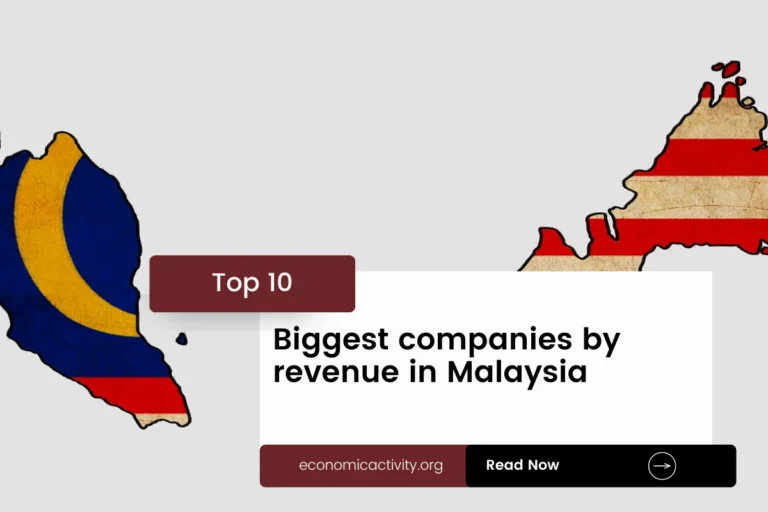Lebanon, with a population of 5,489,739, is ranked 113th in the world, just behind Finland. Located in the Middle East, it covers a total area of 10,450 square kilometers, ranking 153rd globally, just below Jamaica.
Lebanon’s economic position in 2022 is challenging, with a GDP of $7.36 billion, ranking 147th globally. It lags behind Togo, which has a GDP of $8.34 billion. The GDP per capita in Lebanon is $4,000, placing it at 120th position worldwide.
It falls short of Vietnam, with a GDP per capita of $4,163.51. Despite facing economic difficulties, Lebanon continues to strive for growth and stability in its financial landscape.
What are the economic activities of Lebanon?
- Primary activities: 3.9% of GDP.
- Secondary activities: 13.1% of GDP.
- Tertiary activities: 83% of GDP.

Primary Sector of Lebanon
Lebanon’s primary sector, mainly agriculture, thrives due to its diverse climate and abundant natural resources. With 66.4% of the land dedicated to agriculture, the country produces a variety of crops and animal products including potatoes, milk, tomatoes, apples, oranges, olives, cucumbers/gherkins, chicken, lemons/limes, and wheat.
Despite contributing 3.9% to the GDP, agriculture remains crucial for food security and employment. The sector’s significance lies in the variety and quality of products, sustaining the country’s agricultural sector and ensuring a stable economy.
Lebanon’s diverse geology provides abundant natural resources, including limestone, iron ore, salt, and ample water resources in a water-deficit region. These resources drive the economy through industries like mining, agriculture, and water export, making use of the fertile arable land and mineral deposits.
Secondary Sector of Lebanon
What is the secondary sector or what are secondary activities?
The secondary sector involves industries that transform raw materials into finished products for consumption. In Lebanon, main industrial products include real estate, food processing, wine, jewelry, cement, textiles, minerals, chemicals, wood products, oil refining, and metal fabrication.
Manufactures play a crucial role in Lebanon’s total exports, accounting for 61.29% in 2023. This highlights their significant contribution to the country’s economy and trade balance.
Tertiary sector of Lebanon
What is the tertiary sector or what are tertiary activities?
The tertiary sector in Lebanon encompasses a range of services where individuals provide knowledge and time to enhance productivity and meet various needs. It includes intangible goods such as advice, expertise, and attention. Key tertiary activities in Lebanon are restaurants, healthcare and medical care, education and training, banking and finance, communication and information exchange, and tourism and hospitality. These sectors play a crucial role in the country’s economy and contribute significantly to its growth and development.
Highlighting these, Lebanon’s tourism sector contributes significantly to its economy, attracting 1,936,000 annual arrivals, equivalent to 35.27% of its population. Popular destinations like the ancient city of Byblos and the picturesque Jeita Grotto draw visitors, highlighting the country’s rich cultural heritage and natural beauty, driving economic growth and employment opportunities.
Another example of tertiary economic activity is the mobile cellular sector, with approximately 4.3 million subscriptions, supporting technological growth by enhancing communication, fostering innovation, and facilitating digital services.
Military Activities and Economic Sectors of Lebanon
The military is a clear example of how different economic activities work together. In Lebanon, the primary sector supports the military by providing resources. The secondary sector is important too, as it manufactures equipment for the armed forces. The tertiary sector offers various services, while the quaternary sector focuses on research and development. Lastly, the quinary sector involves high-level decision-making and strategy for military operations.
In 2023, Lebanon’s military expenditure was $241.3 million, which is 0.0327% of its GDP. The country has an active military force of 60,000 personnel. This means there are about 13.1 active military members for every 1,000 people in the population.
International Trade of Lebanon
Import Activities of Lebanon

Import activities in Lebanon are crucial, accounting for 278.53% of the GDP in 2023, totaling $20.5 billion. This high dependence reflects the country’s reliance on foreign goods for its economy.
Lebanon’s import activities are diversified, with major partners like China, Turkey, Greece, UAE, and Italy. Key imports include refined petroleum, cars, gold, broadcasting equipment, and diamonds.
Exports Activities of Lebanon

Lebanon’s total exports in 2023 reached $4.41 billion, accounting for 59.92% of its GDP. With export activities playing a high role, they are crucial for the country’s economic stability and growth.
Lebanon’s export activities are diverse, with key partners including the UAE, Syria, Egypt, US, and Turkey. The country primarily exports diamonds, plastics, jewelry, gold, and scrap iron.
Lebanon economy challenges in 2024
Lebanon, a country with an upper middle-income Middle Eastern economy, faces challenges in 2024. Economic depression, COVID-19, and a port explosion have hurt economic activity, leading to hyperinflation and sharp increases in poverty. Banks have stopped lending, but a new financing facility is aiding in the recovery process.



Leave a Reply